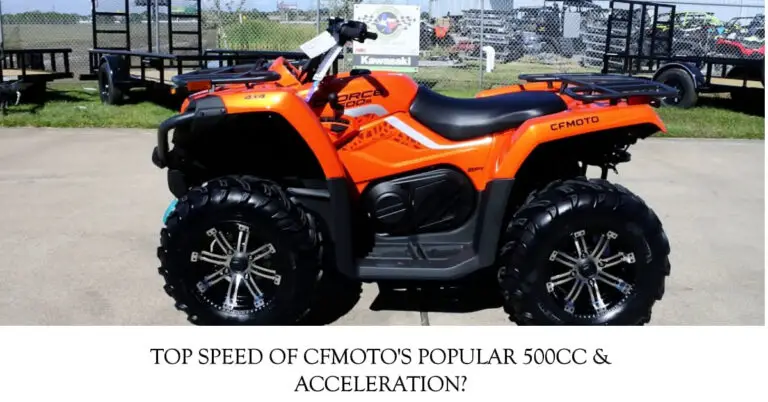Troubleshooting Honda Rancher 420 Electric Shift Problems

The Honda Rancher 420 is one of the most popular all-terrain vehicles (ATVs) on the market thanks to its rugged dependability and smooth, automatic electric shift transmission. However, even the most reliable machines can eventually develop issues. If you own a Rancher 420, you may have experienced problems with the electric shift system like the transmission getting stuck in gear or the display showing error codes.
In this extensive troubleshooting guide, we’ll cover:
- The most common Honda Rancher 420 electric shift issues and their causes
- How to diagnose problems with the electric shift program
- Steps to reset and recalibrate the Rancher 420’s electric shift system
- When to take your ATV to a professional Honda technician
By the end of this guide, you’ll have a better understanding of how to get your Honda Rancher 420 electric shift working properly again.
Table of Contents
What Causes Electric Shift Problems on the Honda Rancher 420?
The Rancher 420 uses an innovative Electric Shift Program (ESP) to control and actuate shifting between its five forward and reverse gears. This automatic system is powered by the ATV’s battery and controlled via an Electronic Control Unit (ECU).
Here are some of the most common causes of electric shift issues on the Honda Rancher 420:
- Faulty shift position sensor – This sensor tells the ESP what gear the transmission is in. If it fails, the system won’t shift properly.
- Problems with the ESP unit – Issues with the ESP controller itself can lead to problems shifting and error codes.
- Loose or damaged wiring connections – Bad connections between system components like the shift sensor, ESP unit, and battery can cause intermittent problems.
- Low transmission fluid level – Without enough fluid, transmission components like the shift fork can stick and bind.
- Worn shift fork or gears – Excessively worn parts inside the transmission can prevent smooth shifting.
Understanding why your electric shift is malfunctioning is an important first step towards getting it fixed. Next, let’s go over some of the most common symptoms of Rancher 420 electric shift failure.
Main Electric Shift Problems on the Honda Rancher 420
Here are some of the most noticeable issues that arise when the Rancher 420’s electric shift system starts to have problems:
Display Shows “N” But ATV Won’t Shift
If your Rancher’s transmission is stuck in neutral but the display reads “N”, there is likely a communication problem between the shift position sensor and the ESP unit:
- Check the wire harness connections – Make sure the connector to the shift position sensor is tight and free of corrosion.
- Inspect the sensor mounting – If the sensor is loose or mounted incorrectly, it can cause issues. Replace if damaged.
- Reset the ESP system – Disconnecting the battery can reset the ESP and re-calibrate the sensor.
Gets Stuck In Gear/Hard to Shift
When the Rancher’s transmission gets stuck in one gear and is difficult to shift, it often indicates an internal mechanical problem:
- Check the transmission fluid level – Low fluid can cause hard shifting and sticking. Top up if needed.
- Change contaminated fluid – Dirty or degraded fluid can prevent smooth shifting.
- Inspect the shift position sensor – A faulty sensor can cause the system to hang up between gears.
- Check the shift fork – A sticky or jammed shift fork not engaging gears properly needs cleaned and lubricated.
Display Is Incorrect/Shifts Erratically
If the digital display starts showing the wrong gears or flashes error codes, it’s likely an electrical issue:
- Check wiring connections – Loose or damaged wires between components can cause glitches.
- Reset the ESP – Recalibrating the controller and sensor may resolve temporary glitches.
- Replace the shift position sensor – A bad sensor will give incorrect gear readings.
No Power/Display But ATV Runs
When your Rancher suddenly loses power to the entire electric shift system but otherwise runs fine, start diagnosis with these electrical checks:
- Check the 30 amp ESP fuse – If it’s blown, replace it with a new fuse.
- Inspect wire harness connectors – Look for corroded or loose connectors at the ESP unit and sensor.
- Test for power at the ESP – Use a multimeter to check for 12V at the controller plug.
As you can see, electric shift problems can stem from a range of sources – sensor issues, electrical faults, mechanical wear, fluid problems, and more. Thorough diagnosis is key to getting your Rancher shifter fixed. Next we’ll go over some helpful troubleshooting tips.
How To Diagnose Your Honda Rancher 420 Electric Shift Issue?
When your Honda Rancher’s automatic transmission starts having issues shifting, don’t just start replacing parts and hoping for the best. With some diagnostic tests and checks, you can zero in on the root cause and save time and money on repairs. Here are some troubleshooting steps to try:
- Review error codes – If your display is showing any flashing error codes, look them up in your manual to identify issues.
- Test the shift position sensor – Use a multimeter to check the sensor resistance values in each gear. Compare to spec.
- Inspect connectors and wiring – Look for damaged wires, faulty connections, signs of water/corrosion etc between the sensor, ECU and battery.
- Check battery and power – Use a multimeter to test for proper voltage going to the ESP unit when the reverse button is pushed.
- Monitor live data – Some aftermarket scan tools can read Rancher 420 data like shift position sensor values, which may reveal issues.
Thoroughly testing the electrical circuits and connections involved with the ESP is the best way to get to the root cause of most electric shift failures. If you don’t have experience with this type of diagnosis, enlist a knowledgeable mechanic.
How To Reset the Electric Shift System on a Honda Rancher 420?
One quick thing to try if your Rancher 420 isn’t shifting right is to reset the Electric Shift Program. Here’s how to do it:
- Turn the ignition switch OFF.
- Disconnect the negative battery cable from the battery terminal for 1-2 minutes.
- While disconnected, press and hold the rear brake lever down.
- While still holding the brake, reconnect the negative battery cable.
- Turn the ignition switch back ON while still holding the brake lever down.
- Finally, release the brake lever. At this point, the ESP will reset and re-calibrate itself.
This reset procedure essentially reboots the whole electric shift control system, re-calibrating the position sensor and controller. It’s commonly recommended by Honda technicians and can resolve many intermittent electric shift issues.
However, if resetting your Rancher’s ESP doesn’t solve the problem, more in-depth troubleshooting and potential component replacement is likely needed. Consulting a knowledgeable Honda mechanic is advised.
When To Seek Help from a Professional Honda Technician?
While this guide should provide a helpful starting point for diagnosing and fixing common Honda Rancher 420 electric shift problems, some issues may require advanced expertise. Here are some instances when it’s best to enlist an experienced Honda ATV repair technician:
- You reviewed error codes but they don’t point to a clear fix.
- The transmission is stuck in gear and resetting the ESP doesn’t release it.
- Electrical tests reveal power or wiring issues you can’t resolve.
- Soft shifting continues after fluid changes and component inspection.
- Internal hard parts like shift forks, gears, drums etc. need replacement.
- The transmission needs to be disassembled for deep inspection and repair.
Since the Rancher 420’s unique automatic transmission is very complex, repairs beyond basic troubleshooting and fluid checks may require opening up the case. This work is best left to trained Honda mechanics with the specialized tools and knowledge to properly service and reassemble the transmission.
By following the troubleshooting tips in this guide, you should now have a better understanding of how to identify common Honda Rancher 420 electric shift problems. Resetting the automatic transmission’s ESP control system may resolve some intermittent issues, but expect that worn sensors, faulty electronics, low fluid, and worn hard parts can necessitate deeper repairs. In those cases, the best bet is to turn to a knowledgeable Honda ATV technician for efficient diagnosis and reliable repair work. With their help, you’ll have your Rancher 420’s smooth-shifting automatic transmission working like new again.







